Pigeons are one of the most common birds in the world, however many people don’t know that there are many different breeds of pigeons some of which are seriously endangered.
The IUCN currently lists 13 species of pigeon as critically endangered and 18 species as endangered. There are also another 33 classed as vulnerable and a further 51 near threatened.
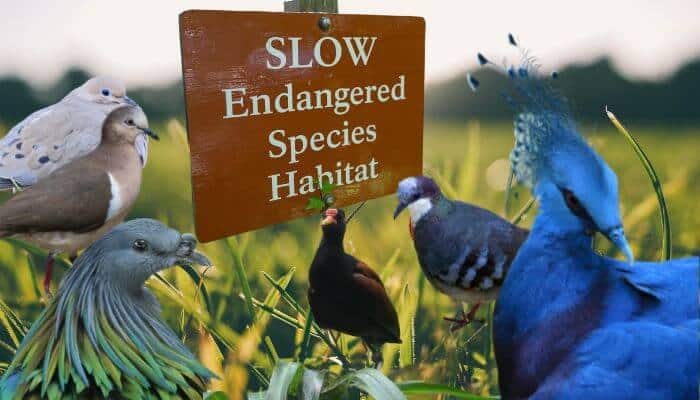
13 may not sound a lot considering that there are 361 species within the Columbidae family (pigeons and doves) but the total number in those four status groups are significant.
The following lists are compiled from the IUCN database as it stands in August 2022. New surveys are continuously carried out so if you read this article in the future, some of the statuses reported here may have changed.
Critically Endangered Pigeons:
1. Grenada Dove
Endemic to the island, Leptotila Wellsi AKA the Grenada Dove is the national bird of Grenada. Estimates in March 2021 put the number of mature individuals at 136-182.
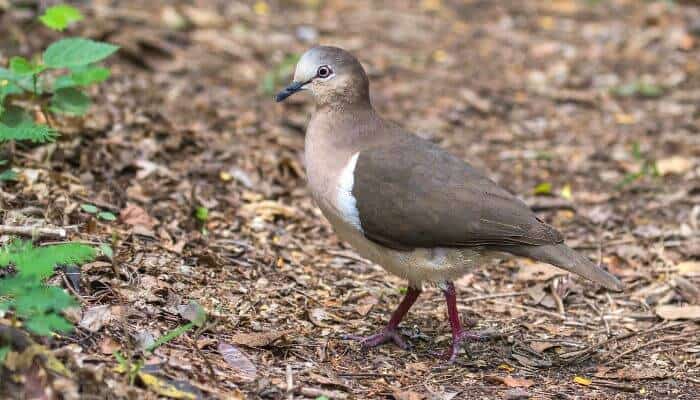
Loss of forest habitat is the bird’s biggest threat but in the recent past, the Grenada dove has suffered population loss due to the introduction of predatory exotic species.
2. Negros Bleeding Heart
Endemic to Panay and Negros, two islands of the Philippines, the Gallicolumba keayi lives in forested regions.
Massive habitat loss and indiscriminate hunting by humans for food consumption have led to a severely fragmented population.
Last assessed in 2020, there are fewer than 250 Negros bleeding heart pigeons in the wild.
3. Mindoro Bleeding Heart
This species is a type of ground dove and is only found in the forests of the Filipino island of Mindoro.
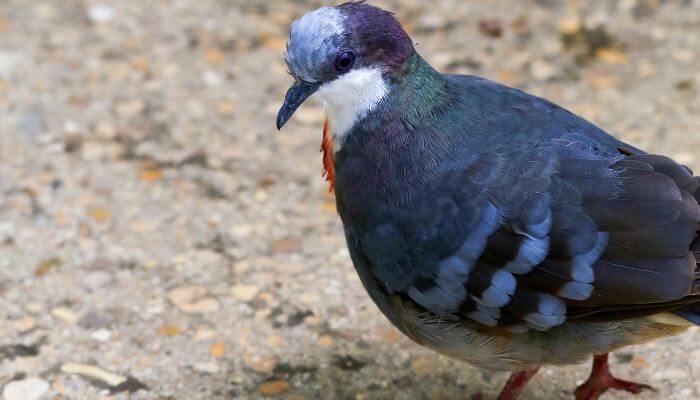
Less than 250 Gallicolumba platenae exist and numbers continue to decrease due to habitat loss, predation by feral dogs and cats and also hunting by humans for food consumption.
4. Tooth-Billed Pigeon
Little is known about Didunculus strigirostris other than its numbers are extremely low (49-250 mature individuals).
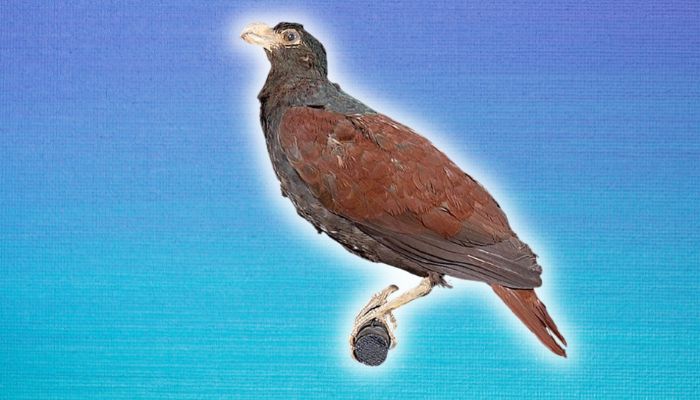
The tooth-billed pigeon is a large species endemic to Samoa where its preferred habitat is the island’s undisturbed forests.
Sadly, this means their range is greatly restricted and they also face future habitat loss, predation and harsh climatic events such as cyclones.
5. Sulu Bleeding Heart
Another endangered pigeon of the Philippines, the Gallicolumba menagei is found only on the island of Tawi-Tawi and its surrounding islets.
Most of their preferred habitat of closed canopy forest has been cleared and there are no protected areas.
So few numbers exist that there is genuine concern that the species is close to extinction.
6. Rapa Fruit Dove
Making its home on the tiny island of Rapa, one of the Tubuai Islands in French Polynesia, numbers of the Ptilinopus huttoni continue to decline.
They live in two to five locations in the forests of the island and this habitat has degraded due to the introduction of the strawberry guava plant for agriculture.
Two surveys conducted first in 1990 then in 2017, showed a decrease of 40% in the population. Numbers continue to decline.
7. Negros Fruit Dove
Very little is known about Ptilinopus arcanus which lives on the islands of Negros and Panay in the Philippines.
Apart from a confirmed sighting in 1953, a reported sighting in the 1990s and a few discovered on Panay Island, it has been impossible to establish how many birds of this species there are.
It is believed to be close to extinction as it is still at risk of habitat loss and hunting.
8. Silvery Pigeon
Once considered extinct but thanks to a few reported sightings now classified as critically endangered, the silvery pigeon (Columba argentina), also known as the grey wood pigeon, is found in Indonesia and Malaysia.
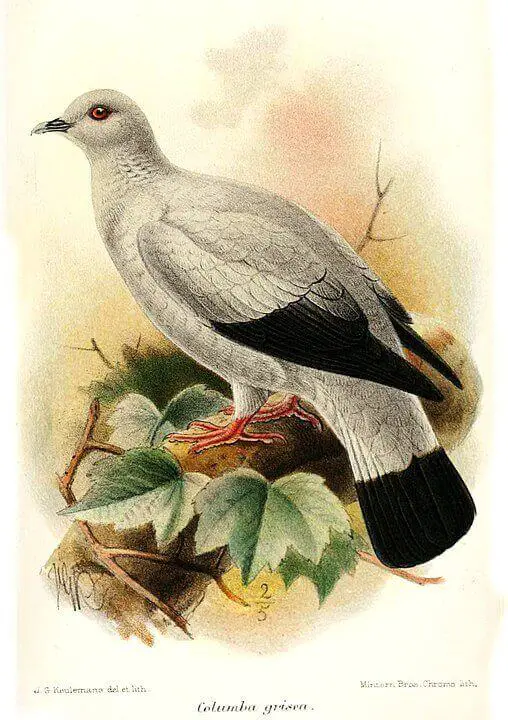
Even so, according to assessments in 2019, there are less than 50 mature individual birds left thanks to disappearing habitat and predation by introduced species.
9. Cebu Brown Dove
Another species that was once declared extinct, scattered sightings between 2007 and 2012 changed its classification to critically endangered.
The Phapitreron frontalis is endemic to the island of Cebu in the Philippines where its forest habitat is under constant threat of clearance for agricultural and urban activity.
10. Blue-Eyed Ground Dove
The rapidly depleted dry lowland grasslands of Brazil’s Cerrado region are home to less than 250 Columbina cyanopis (As assessed in 2019).
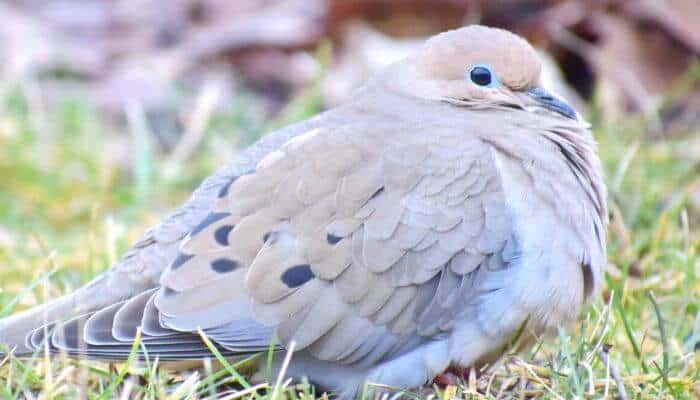
Like the silvery pigeon, the blue-eyed ground dove was declared extinct in 1941 but thanks to a sighting of a dozen birds in 2016, they were reclassified as critically endangered.
11. Purple-Winged Ground Dove
With its primary locations being the Atlantic bamboo forests of Brazil, Argentina and Paraguay, the Claravis geoffroyi has been depleted drastically thanks to the wild bird trade and habitat loss.
Numbers in 2016 were estimated at less than 250.
12. Polynesian Ground Dove
Assessed at just 150 in number in 2017, Alopecoenas erythropterus is endemic to some of the islands of French Polynesia.
The biggest threat to the species in the recent past has been black rats although measures have been taken to remove the rats from the islands. Other threats are cat predation, habit deterioration and loss and natural disasters such as cyclones. Conservation efforts are on-going.
14. Black-Naped Pheasant Pigeon
Favouring a forest habitat above 1000m elevation on Fergusson Island in Papua New Guinea, Otidiphaps insularis is also endangered due to habitat loss and destruction.

Although surveys have failed to record sightings, locals report continuing hunting of the species for food. The latest assessment was made in July 2021 with numbers estimated between 49-250 with expectations they are at the lower end of that scale.
As well as providing an estimate of population numbers, the IUCN also signifies the population trend. All thirteen of the critically endangered species of pigeon are classified as decreasing in number.
Endangered Pigeons:
| Species | Location | Number | Threats | Population Trend |
|---|---|---|---|---|
| Blue-headed quail dove | Cuba | 600-1700 | Deforestation | Decreasing |
| Tawitawi brown dove | Tawitawi and Sanga-Sanga islands, Philippines | 250-999 | Deforestation | Decreasing |
| Timor green pigeon | Timor Leste and West Timor, Indonesia | 660-2000 | Deforestation and hunting | Decreasing |
| Marquesas ground dove | Marquesas Islands, French Polynesia | 50-249 | Deforestation, predation (cats) and climate change | Stable |
| Wetar ground dove | West Timor and Wetar, Indonesia, and Timor-Leste | 1500-7000 | Severe lowland habitat loss and hunting. | Decreasing |
| Comoro green pigeon | Comoros Islands | 1000-2499 | Deforestation, invasive species and illegal poaching | Decreasing |
| Tuxtla quail dove | Sierra de los Tuxtlas, Mexico | 250-999 | Loss of habitat | Decreasing |
| Polynesian imperial pigeon | Makatea, French Polynesia | 570-1200 | Habitat destruction due to mining | Increasing |
| Raiatea Fruit-dove | Huahine, Raiatea, Tahaa, Bora Bora and Maupitim French Polynesia | 1000-2499 | Introduction of the predator Swamp harrier, hunting and degradation of habitat. | Decreasing |
| Purple quail dove | Chocó region Colombia and North-west Ecuador | 600-1700 | Loss of habitat due to coca production and mining. | Decreasing |
| Nukuhiva Imperial-pigeon | Marquesas Islands, French Polynesia | 249 | Illegal hunting, habitat loss and degradation. | Increasing |
| Santa Cruz ground dove | Santa Cruz Islands, Solomon Islands and Espiritu Santo, Vanuatu | 218-1070 | Predation by rats, cats and dogs, yellow crazy ants, hunting, volcanoes and cyclones. | Decreasing |
| São Tomé olive pigeon | São Tomé | 2600-3700 | Hunting. | Decreasing |
| White-fronted quail dove | Dominican Republic | 600-1700 | Habitat loss, hunting, introduced species. | Decreasing |
| Caroline ground dove | Various islands in the Federated States of Micronesia | 200-500 | Introduced species, hunting, loss of habitat. | Decreasing |
| Mindoro imperial pigeon | Mindoro, Philippines | 600-1700 | Deforestation and hunting. | Decreasing |
| Palau ground dove | Palau | 250-999 | Introduction of alien species and habitat loss. | Decreasing |
| São Tomé green pigeon | São Tomé | 24670-72840 | Hunting in extremely large numbers. | Decreasing |
As you can see from the last entry on this list, the population doesn’t have to be small to be classed as endangered. The São Tomé green pigeon is suffering a massive decline in numbers because of domestic and commercial hunting and its rate of loss is of huge concern.
This is a great example of the watching brief of the IUCN and how alert it is to the threats to the world’s wildlife.
Why Do Pigeons Become Endangered?
An endangered species means it is in danger of extinction throughout all or a significant portion of its range. The IUCN Red List of Threatened Species is the most well-recognized catalogue of threatened species. The data is compiled by the International Union for Conservation of Nature.
The reasons for reducing numbers of endangered pigeons are the same as for any animal. They are:
- Overhunting or overharvesting
- Habitat loss
- High specialisation
- Pollution
- Invasive species
- Human-wildlife conflict
- Disease
- Low birth rate
- Genetic vulnerability
- Small population
Vulnerable Pigeons:
The current list is:
- Yellow-legged pigeon
- Ochre-bellied pigeon
- New Britain bronzewing
- Ring-tailed pigeon
- Mindanao bleeding-heart pigeon
- Dark-eared brown dove
- Brown-backed dove
- Pink pigeon
- Pale-capped pigeon
- Chatham pigeon
- Makatea fruit dove
- Spotted imperial pigeon
- Shy ground dove
- Carunculated fruit dove
- Flores green pigeon
- Sri Lanka woodpigeon
- Large green pigeon
- Grey imperial pigeon
- Philippine collared dove
- Henderson fruit dove
- Red-naped fruit dove
- Banggai fruit dove
- Lompobattang fruit dove
- White-naped pheasant pigeon
- Yellow-eyed pigeon
- Flame-breasted fruit dove
- Scheepmakers crowned pigeon
- European turtle dove
- Grey-headed quail dove
- Nilgiri woodpigeon
- Western crowned pigeon
- Pemba green pigeon
- Micronesian imperial pigeon
Of the list above all are seeing decreasing population numbers except for the pink pigeon (stable), Chatham pigeon (increasing), Makatea fruit dove (stable), and the Henderson fruit dove (increasing).
Near Threatened Pigeons:
We’re not going to list all 51 members of the Columbidae family that are classified as near threatened but will highlight a few and tell their stories.
1. Nicobar Pigeon
One of the most striking looking of the Columbidae birds, the Nicobar pigeon is a close relative of the extinct dodo.
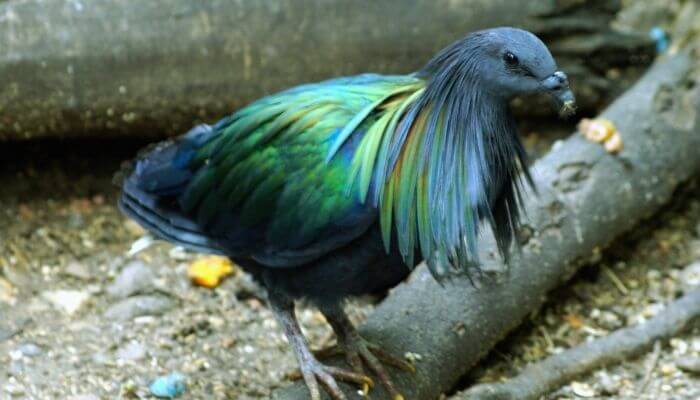
The current population numbers are unknown but the bird is widely hunted for its gizzard stone.
2. Galapagos Dove
Most people would assume that the Galapagos Islands are a haven for wildlife as it’s a location that receives so much ecological scrutiny.
One of its species that isn’t in such great shape numbers-wise is the Galapagos dove.
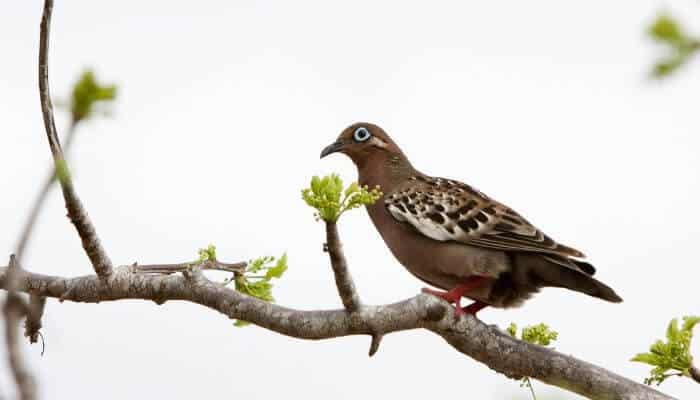
Unlike so many on the various lists that are threatened due to loss of habitat and human hunting, the reason for this species’ population decline is feral cats. Nestlings are also subject to being prey of the avian vampire fly.
3. Victoria crowned pigeon
This is the largest species of pigeon and lives in Papua and Indonesia. It is distinctive not only for its size but also its spectacular crown.
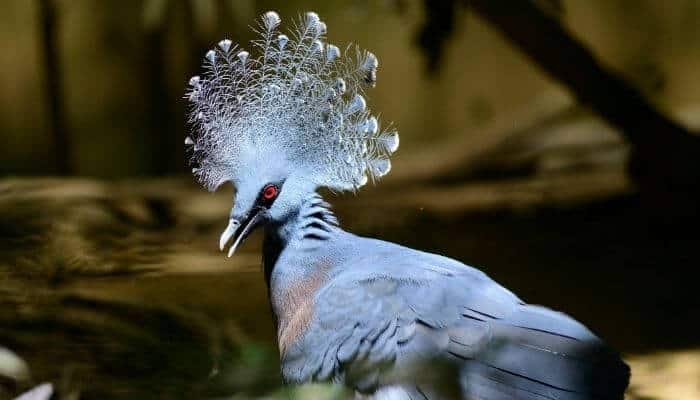
The Victoria crowned pigeon is classed as vulnerable because it is hunted in large numbers both locally and commercially not only for meat but its feathers.
4. Russet-crowned quail dove
This is an excellent example of how human activity impacts wildlife.
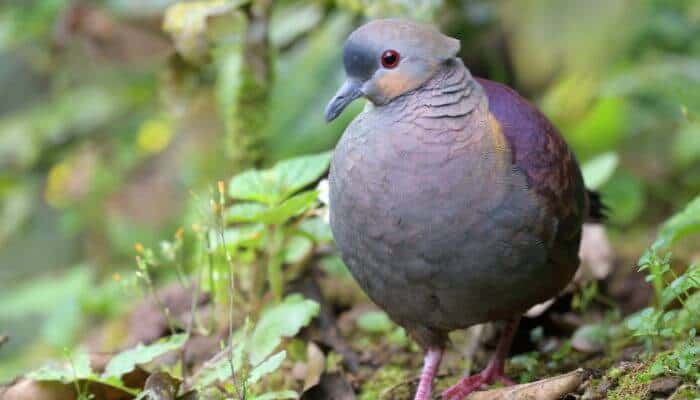
The population of this species is currently listed as stable but the russet crowned quail dove is classed as near threatened by the IUCN because of the threat that would arise should the proposed extension of the Pan-American highway be revived.
5. Plain pigeon
Once abundant and widespread in the Caribbean, the plain pigeon has undergone considerable decline.
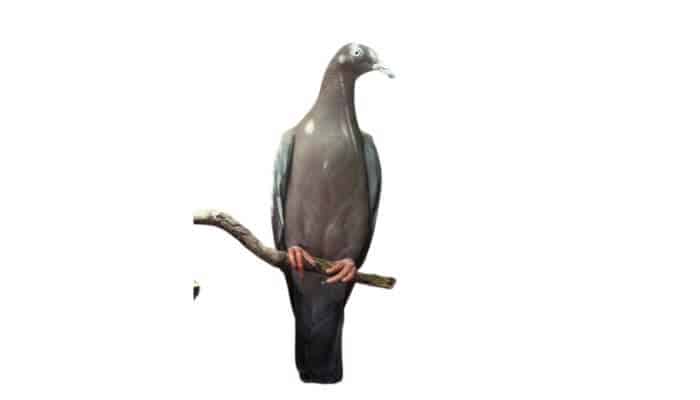
It is now only known in Cuba, Jamaica, Hispaniola (Haiti and Dominican Republic) and Puerto Rico.
The expanse of the plain pigeon’s habitat has been eroded due to plantation agriculture and logging and in the past, the species was also hunted as food.
The Reality of Threatened Status
These classifications by the IUCN are a robust indicator and are taken extremely seriously by conservationists.
There is a very real possibility that those species that are critically endangered do become extinct.
Many governments recognize this and birds categorized as critically endangered and endangered are subject to protection and conservation efforts along with species on the near threatened list.
There are 16 members of the Columbidae family that are recorded as being extinct.
They include the Choiseul pigeon, Passenger pigeon, Liverpool pigeon, and of course, the talisman of all extinct wildlife, the Dodo.
